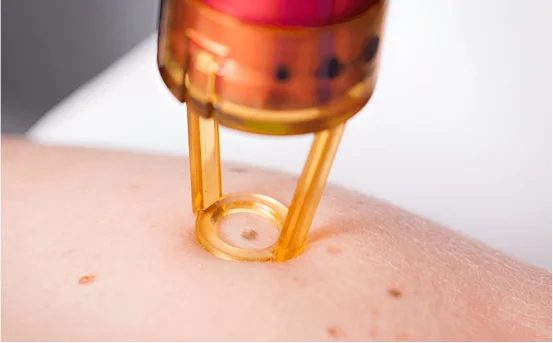Pediatric cardiac catheterization is a minimally invasive procedure used to diagnose and sometimes treat various heart problems in children, from congenital heart defects to abnormal heart rhythms and pulmonary hypertension. This procedure allows pediatric cardiologists to gather detailed information about the structure, function, and blood flow of a child’s heart insights that are often not possible through external imaging alone, such as echocardiograms or MRIs.
When a child is diagnosed with a heart condition, it can be a deeply emotional and confusing time for parents. Among the advanced diagnostic and treatment tools available, pediatric cardiac catheterization stands out as a minimally invasive procedure that provides critical insights into a child’s heart health.
What Is Pediatric Cardiac Catheterization?
Pediatric cardiac catheterization is a specialized medical procedure used to diagnose and sometimes treat congenital or acquired heart conditions in children. It involves inserting a thin, flexible tube called a catheter into a blood vessel (usually in the groin or arm) and guiding it into the heart under X-ray imaging.
Through this catheter, doctors can :-
-
Measure pressures within the heart chambers
-
Take blood samples
-
Inject contrast dye for imaging (angiography)
-
Repair defects or narrow vessels using interventional tools
The procedure can be either diagnostic (for investigation) or interventional (for treatment).
Common Causes for Pediatric Cardiac Catheterization
Here are the most frequent medical conditions and situations where cardiac catheterization becomes necessary in pediatric patients :-
Congenital Heart Defects (CHDs)
One of the most common causes for pediatric cardiac catheterization is to evaluate or treat congenital heart defects structural problems present at birth. These include:
Atrial Septal Defect (ASD) and Ventricular Septal Defect (VSD)
-
Catheterization helps assess the size and blood flow through the holes in the septum.
-
It may also be used to close the defect using a device without open-heart surgery.
Patent Ductus Arteriosus (PDA)
-
In some cases, a PDA (a vessel that fails to close after birth) can be closed using a catheter-based device, especially in preterm infants.
Coarctation of the Aorta
-
A narrowed section of the aorta can be diagnosed and treated via balloon angioplasty during catheterization.
Pulmonary Valve Stenosis or Aortic Stenosis
-
Balloon valvuloplasty, an interventional procedure done during catheterization, helps to open narrowed heart valves.
Cyanotic Heart Diseases
Cyanotic congenital heart diseases, such as Tetralogy of Fallot (TOF), cause low oxygen levels in the blood, leading to a bluish discoloration of the skin (cyanosis). Cardiac catheterization helps in :-
-
Measuring oxygen saturation in different heart chambers
-
Planning surgical or interventional corrections
-
Performing procedures like pulmonary valve dilatation
Pulmonary Hypertension
Cardiac catheterization is the gold standard for diagnosing pulmonary hypertension in children, which involves high pressure in the arteries of the lungs.
It provides :-
-
Accurate pressure readings in the pulmonary artery
-
Information on how the heart is coping with increased pressure
-
Response to medications (vasoreactivity testing)
Heart Transplant Evaluation or Monitoring
For children undergoing or who have undergone a heart transplant, cardiac catheterization is essential to :-
-
Assess for rejection episodes by taking myocardial biopsies
-
Evaluate blood flow in the coronary arteries
-
Monitor heart function over time
Cardiomyopathies and Heart Muscle Disorders
Pediatric cardiac catheterization helps diagnose and monitor cardiomyopathies, such as :-
-
Dilated cardiomyopathy (DCM)
-
Hypertrophic cardiomyopathy (HCM)
Through pressure measurements and angiography, doctors can evaluate :-
-
Heart chamber size
-
Pumping efficiency
-
Blood flow patterns
Evaluation of Complex Heart Surgeries
Children with complex congenital heart repairs (like Fontan procedure or Norwood surgery) require long-term follow-up.
Cardiac catheterization plays a key role in :-
-
Assessing shunt or conduit function
-
Checking pressures and oxygen levels post-surgery
-
Planning further surgical or interventional procedures
Infective Endocarditis Evaluation
In rare but serious cases of infective endocarditis (heart valve infection), cardiac catheterization may be used to :-
-
Assess the extent of valve damage
-
Detect associated complications like abscesses or embolisms
-
Guide surgical planning
Arrhythmia Diagnosis and Ablation
Some children develop abnormal heart rhythms (arrhythmias). Cardiac catheterization, specifically electrophysiology studies (EPS), helps :-
-
Map the electrical pathways of the heart
-
Identify the origin of abnormal rhythms
-
Treat the arrhythmia using radiofrequency ablation via catheter
Postoperative or Follow-up Assessment
After heart surgeries, cardiac catheterization may be required to :-
-
Evaluate surgical success
-
Monitor for complications such as stenosis or residual defects
-
Determine the need for reintervention
How Is Pediatric Cardiac Catheterization Performed?
Here’s what parents can expect :-
Pre-Procedure
-
Detailed evaluation including blood tests, echocardiography, and possibly MRI or CT scans
-
Fasting instructions (usually 4–6 hours before)
-
Explanation of risks and benefits
During the Procedure
-
The child is usually placed under general anesthesia
-
A catheter is inserted through the groin or arm into the heart
-
Contrast dye is used for X-ray imaging (angiography)
-
Depending on the condition, diagnostic or interventional steps are taken
Post-Procedure
-
Monitoring in recovery room or ICU for a few hours
-
Bed rest for a few hours post-procedure
-
Discharge usually within 24 hours for routine procedures
Is Pediatric Cardiac Catheterization Safe?
Yes, when performed by experienced pediatric cardiologists in a specialized center, the procedure is very safe and effective. However, like any medical procedure, it carries some minimal risks :-
-
Bleeding or bruising at catheter insertion site
-
Arrhythmias during or after the procedure
-
Allergic reaction to contrast dye
-
Rarely, infection or vascular injury
Role of Parents: How You Can Support?
Parents play a crucial role in the success of the procedure by :-
-
Ensuring the child follows pre-procedure fasting and medication instructions
-
Providing full medical history and allergy information
-
Offering emotional reassurance to ease the child’s anxiety
-
Following all post-procedure care and follow-up guidelines
Conclusion
Pediatric cardiac catheterization is a powerful tool for diagnosing and treating heart problems in children. Whether it’s a congenital heart defect, pulmonary hypertension, or postoperative evaluation, this procedure offers precise insights with minimal invasion.






















